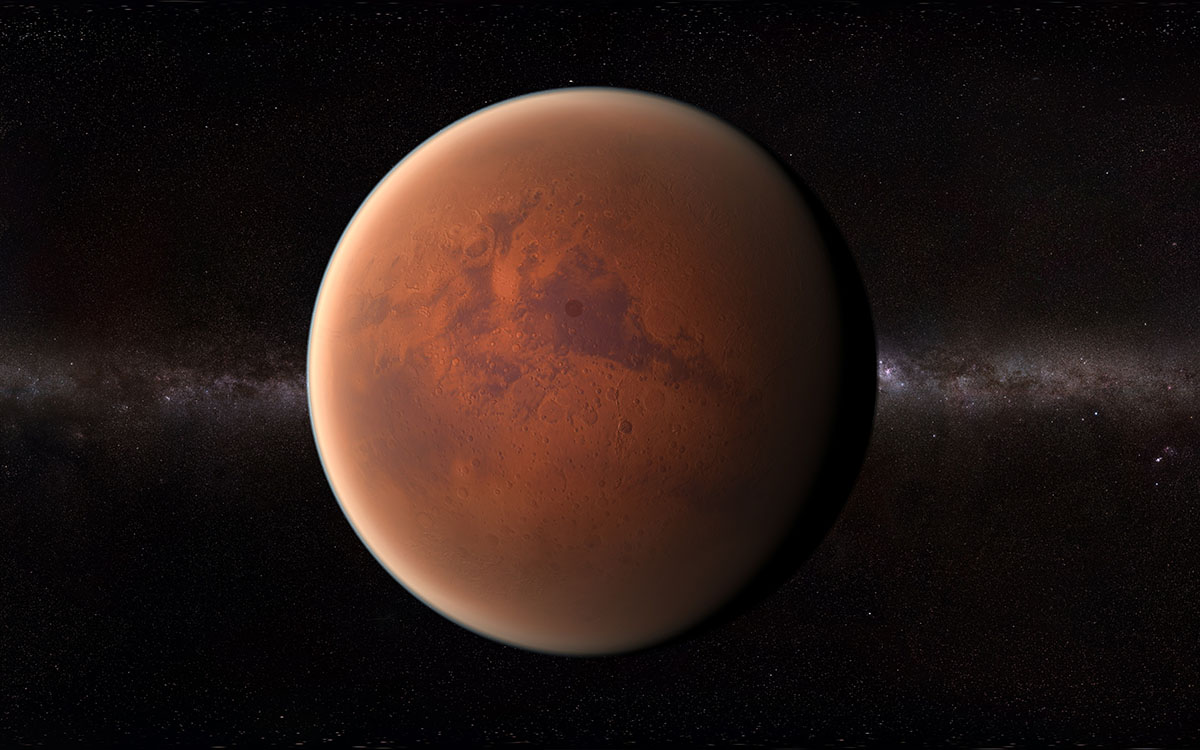cold? what cold? it’s the uv rays that’ll kill you

It’s not that Mars is hostile to life as we know it, it’s just that even the toughest terrestrial microorganisms able to survive a big gamma ray burst from a nearby nuclear reactor die within ten minutes of exposure to a close simulation to the conditions on the red planet’s surface. That seems to be the conclusion of Italian scientists who wanted to find out just how tough it was to survive on Mars and built a chamber filled with a low pressure mix of gases closely simulating the Martian atmosphere, a temperature range between 20 °C and -100 °C to replicate the planet’s seasonal extremes, and bathed their microbial subjects in UV rays. And while bacteria are well known for their ability to withstand extreme temperature swings and didn’t let the cold bother them, a blast of radiation invariably dealt the fatal blow to the microbes and their spores, killing them within minutes.
Grim news for any germs trying to hitchhike their way to an alien world aboard our rovers and landers but then again, it’s good news for astrobiologists who want to study native alien bacteria. Since our microbes would be fried by the intense UV rays constantly raining down on the Martian surface within about five minutes or so, we could expect our rovers to be sterilized before they even make it off the landing pad and only the surface. Keep in mind that Martian rovers move very slowly due to the delays in communication between our worlds and the necessity for some very careful planning to avoid getting them stuck in some sort of sinkhole tens of millions of miles away from the nearest tow truck.
The odds of a contaminated robot digging deep into the Martian soil are very, very slim. In fact, if you were to look at the charts tracking the survival of experimental bacteria, they’re reminiscent of exponential curves aimed downward. Even the most radiation resistant organism we know of, the mighty Deinococcus radiodurans, which is able to withstand a blast of radiation 5,000 times greater than what’s required to kill a human nearly instantly, died within just ten minutes of UV exposure.
Of course all this doesn’t mean that Mars is a dead planet. Bacteria can hide from the UV light at the surface, metabolizing underground gases, metals and organic substances, and just a few inches into the sand could mean the difference between a sterile desert and a thriving microbial ecosystem on an alien world. The team which carried out the experiment notes that their results shouldn’t be used to rule out the potential for an alien life form on our planetary neighbor. Instead, we should consider that to adapt to the harsh environment, they’d have to be quite different from life as we know it and burrow deep into the soil. And considering that whatever we’d use to dig them up would be sterilized by UV rays, there’s a very high chance that whatever life we find on a future expedition is native to Mars rather than Earth.
The catch here is that the Martian surface isn’t shielded by a strong magnetosphere or an ozone layer which would deflect most of the harmful UV light, but because it lost its water and initially thick atmosphere gradually, over millions of years, that may have given native life the whisper of a chance to adapt to a new, harsher, more radioactive world. Provided of course that life was even present on early Mars, something that’s still a very open question.
There’s also a little addendum to the initially bleak findings of the study. Spores from three strains of bacteria managed to beat the ten minute survival maximum and endure an entire 4 hours without a problem. In some cases, they lived for almost 28 hours. And if you were to take away the UV light during the nighttime hours, as the paper notes, the spores find their new home quite comfortable and will even reactivate with the slightest hint of water. So the big picture here goes something like this. Mars is not necessarily the most hostile place to life as we know it, but only when we’re talking about its unexplored underground world.
Away from the killer ultraviolet rays bathing its surface, a whole host of microbial organisms could flourish with even a bit of water and if we were to dig them up, we would be doing so with equipment sterilized of all terrestrial contaminants that we think could survive the trip. This study offers more evidence for our current ideas about potential life on Mars and how we should seek it. Now we just need to keep looking with bigger and better robots, Or, if we’re able to do so in the near future, microbiologists exploring the Martian caves and analyzing alien soil…
See: Galletta, G., Bertoloni, G., D’Alessandro, M. (2010). Bacterial survival in Martian conditions, arXiv: 1002.4077v1





